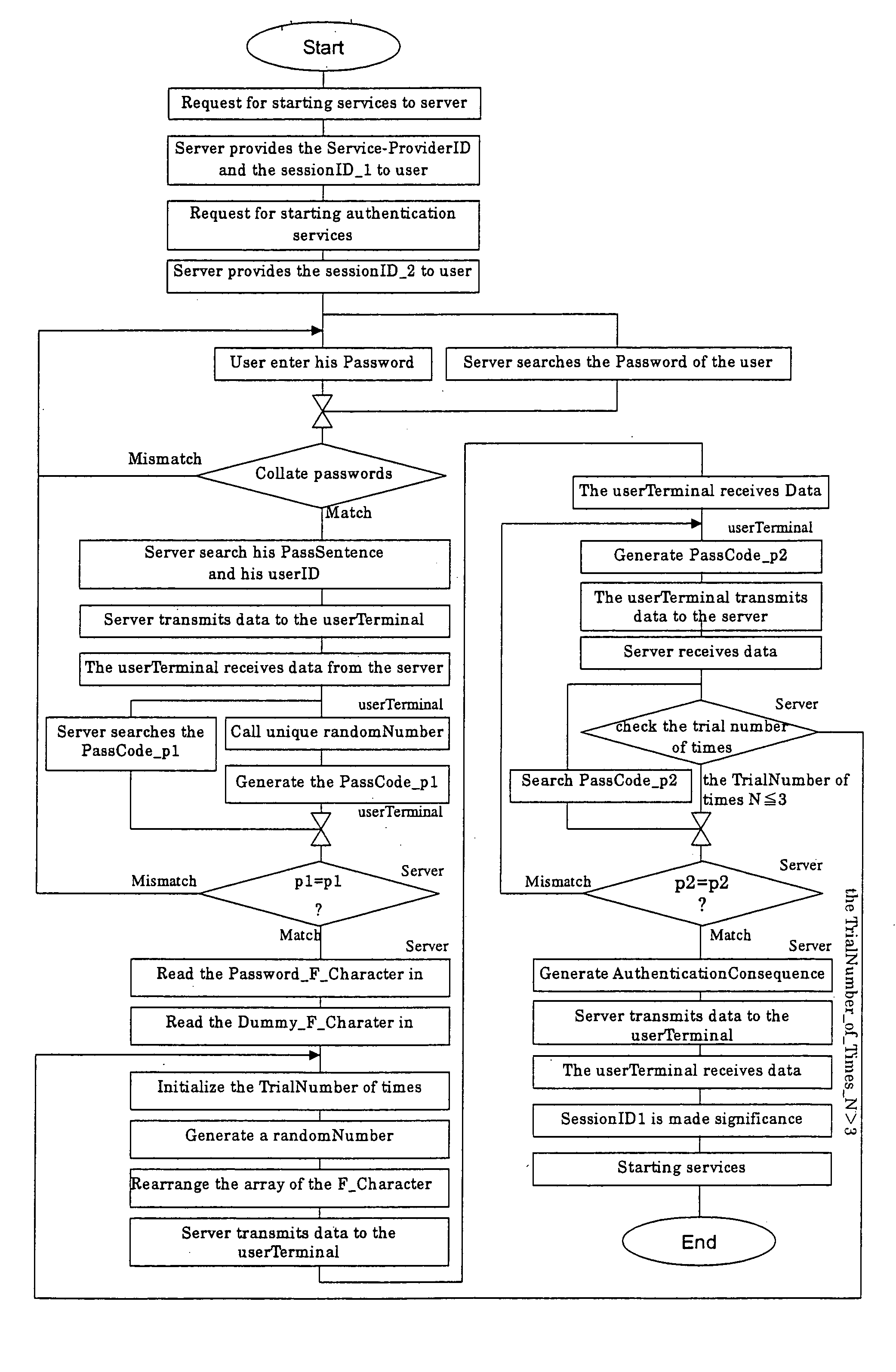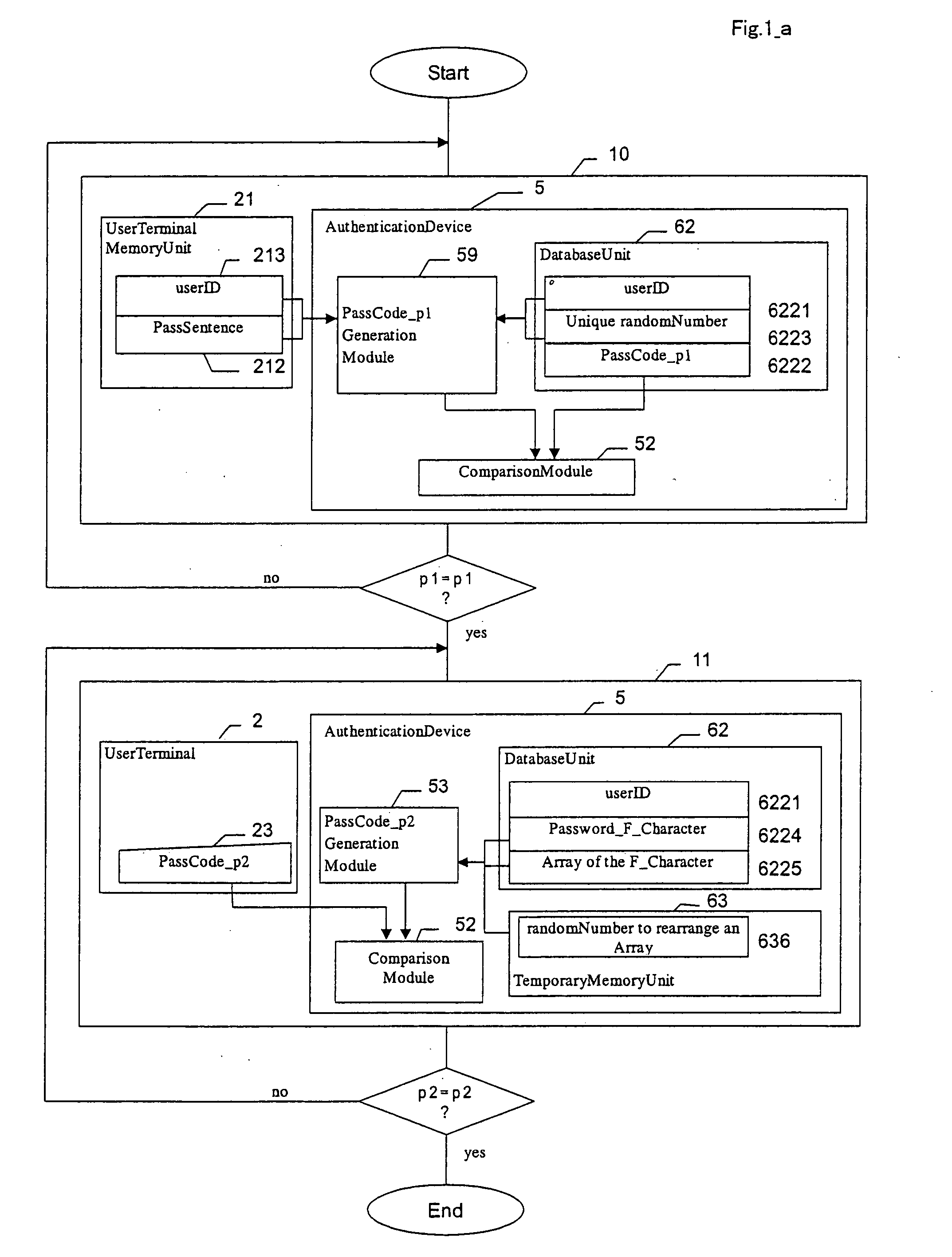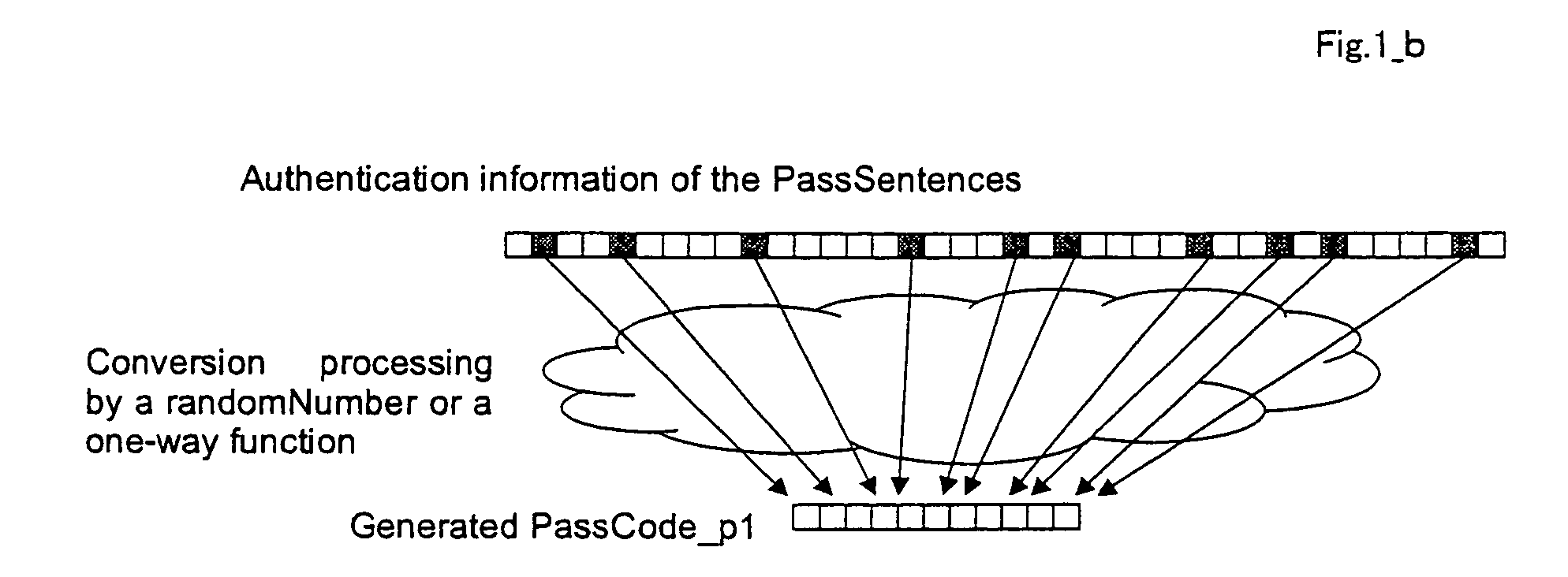Although these mathematical
encryption and decryption technologies have gained popularity in modern society, subsequent
waves of technological innovation in terms of both
information processing hardware and
software have gradually eroded the practical effectiveness of these technologies.
That the keys can be easily decrypted in the public-key encryption technology used for authentication poses the problem of the ease of “spoofing,” or assuming the identity of another user.
Under these circumstances, now under development is an
encryption system, called
quantum encryption, that is theoretically undecipherable by unauthorized third parties because it is based on “
quantum mechanical entanglement.” In encryption and two-way authentication based on public-key encryption or any future communication methods based on
quantum encryption or
quantum teleportation, however, authentication itself is dependent upon
terminal equipment or a
system on a terminal.
As a result, when an
authentication system is used in a
public environment, such as an enterprise, where
terminal equipment can be accessed by an unspecified number of people, or via portable terminal devices that are likely to be burglarized or accidentally lost, it is difficult to rely on the
authentication system to determine whether someone on the communication line is, in fact, who it is declared to be since anyone can operate that terminal equipment.
However,
biometrics-based user authentication where the same
biometrics information has to be shared not only by a user but by the authenticating side still entails the problem of
identity theft from the
authentication system since it is easy for the authenticating person to use the registered
biometrics information, and the abuse of personal information cannot be perfectly prevented so long as the authenticating person might have a malicious intent to impersonate, or emulate the identity of the user.
On top of that, there can be the problem of leakage of personal information from the authentication system to the outside because biometrics information is usually stored and handled as
electronic data.
If the user loses, in an accident, the part of his / her body used for authentication, on the other hand, the uniqueness of biometrics information could work negatively by limiting the possible substitution of other bodily characteristics for that part.
This might
pose a social problem as the user whose authentication data was stolen could be shut out of society.
If biometrics-based authentication is used for a wrong purpose in a crime, a more ghastly crime, such as the
amputation of body parts used for authentication, could result.
Another basic problem of biometrics information as used for user authentication lies in that even the technology relying on biometrics information that is intrinsically unique cannot escape from electronic forgery since the technology makes progress on the common foundation of CG, voice synthesis and other
information processing technologies.
Fingerprint identification, the oldest method of authentication, has some difficulties, including the ease of
copying fingerprints with
silicone rubber, that is, the problem of leak of authentication information beyond the control of the user and outside the authentication system.
It also entails the problem of leak of authentication information beyond the control of the user and outside the system as a user can be easily impersonated based on his / her
fingerprint data stolen from an official security organization collecting fingerprints, or through the abuse of
fingerprint data by the state authority itself.
Furthermore,
fingerprint-based identification has the horns of a dilemma between uniqueness and substitutability because user authentication becomes impossible when a finger or fingers used for comparison are lost, or the inner surface of the end joint of a finger is damaged in an accident.
Voice-print identification has also the problem of leak of authentication information beyond the control of the user and outside the system since voice prints can be easily copied with a recording
machine.
User authentication based on the facial configuration of a person has the problem of leak of authentication information beyond the control of the user and outside the system as the image information of the face of the person can be easily generated in the real world, and the problem of electronic forgery by synthesizing or producing an image through the use of CG, etc.
At the same time, this method has the difficulty of realizing, on the side of the user, the fact that the portable device, such as an IC card, was lost or stolen, resulting in an aggravated damage to the user without noticing the fact of loss or theft.
The authentication method based on portable device involves the problem of defective authentication technology due to the characteristics of the technology itself since it is difficult to provide substantiation to prove that an accident or crime was caused by the other party who impersonated the user using the stolen portable device, or by the card owner who staged the accident or crime.
The fundamental problem inherent in the authentication method based portable devices is that authentication is carried out by comparing the key information, including a private key in the public-key system, a private key based on
DNA information, or a
common key and a user ID, stored in the memory part of the portable device with the key information stored on the authentication device.
This may offer the risks of impersonation (“spoofing”) using the private key, terminal authentication, interception, as in the case of the public-key system, making the system insecure if an authenticating person has a malicious intent.
In this case, however, the problem inherent in the
password-based authentication system may be introduced as it is in the authentication method based on a card or other portable device.
The authentication system based on a self-contained IC
chip implanted in the body may be exposed to the risk of being involved in a more grisly crime as in the case of biometrics-based authentication, though it eliminates the possibility of being lost.
Leakage of information may take place through a stealthy glance at a note pad, that is, leakage within the control of the user and outside the system.
Another leakage may occur when critical information, such as a password, are entered on the computer by the user.
Furthermore, authentication information may leak as input information is grasped by an unauthorized person who monitors the traffic on the network.
Moreover, the fact that the same password is stored on the authenticating side makes the system insecure if the authenticating person has a malicious intent of “spoofing” (impersonating) the user.
This system, however, is an authentication system with emphasis placed on the encryption of communications, and has the same problem as with the conventional password-based identification since it relies on traditional passwords for user authentication.
With password-based authentication, too, a limited number of possible combinations of numbers and characters due to insufficient digit numbers poses the risk of being impersonated since a password can be easily deciphered by brute-force
password cracking.
Secondly, the success in deciphering public-key encryption means the revival of interception threats.
Thirdly, authentication systems using terminal equipment or portable / bodily implanted personal devices containing public-key encryption and other key information are nothing more than those for authenticating the terminal equipment loaded with private keys, rather than authenticating the user.
Fourthly, authentication systems based on biometrics information, portable devices or passwords may readily involve impersonation if the authenticating side has a motive to impersonate, or the problem of leak of authentication information from the authentication system.
Fifthly, there is a dilemma between uniqueness and substitutability in authentication systems based on biometrics information.
Sixthly, grisly consequences may be caused when authentication systems based on biometrics information or a bodily implanted personal device are abused for a crime.
Seventhly, there is a
threat of electronic forgery in biometrics information.
Eighthly, authentication systems based on biometrics information may involve the
threat of leakage of authentication information beyond the control of the user and outside the system.
Ninthly, authentication systems based on portable devices or passwords may involve the threat of leakage of authentication information within the control of the user and outside the system.
Tenthly, password-based authentication has the problem of password theft through stealthy glance at the password or unauthorized monitoring of the traffic on the network.
 Login to View More
Login to View More  Login to View More
Login to View More 


